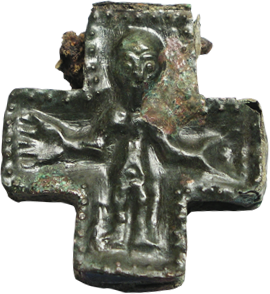Archeologický ústav AV ČR, Praha, v.v.i. si Vás dovoluje pozvat na přednášku Mattiase Jakobssona The genomic footprint of early northern Europeans věnující se problematice pravěkých migrací v Evropě a populačním vztahům mezi lovci-sběrači a zemědělci z pohledu archeogenetiky. Přednáška se uskuteční v pondělí 9. prosince 2013 v 16.00 v knihovně ARÚP.
Přednášející:
Mattias Jakobsson has a broad interest in population genetics and human evolution. His lab uses computational approaches to decipher the complex patterns of large-scale human genomic variation, and to understand their implications for human demographic and evolutionary history.
Abstrakt přednášky:
Extracting genetic information from ancient human remains is now beginning to show its full potential. We have generated genomic data, up to 1X coverage, from several Scandinavia Stone-Age human remains that illuminate the impact of the agricultural revolution on patterns of genomic variation in Europe. Stone-Age Scandinavian individuals show remarkable population structure corresponding to their cultural association and the farmers are genetically most similar to extant southern Europeans, contrasting sharply to the hunter-gatherers whose genetic signature is similar to extant northern Europeans. Looking beyond Scandinavia, we show that the Tyrolean Iceman from an agricultural context is most similar to Stone-Age Scandinavian farmers, whereas the 7,000 years old Iberian hunter-gatherers are most similar to Stone-Age Scandinavian hunter-gatherers, opposite to what would have been predicted from their geographical origins. This finding shows that lifestyle may be the major determinant of genetic similarity in pre-historic Europe rather than geography as in modern-day Europe.








